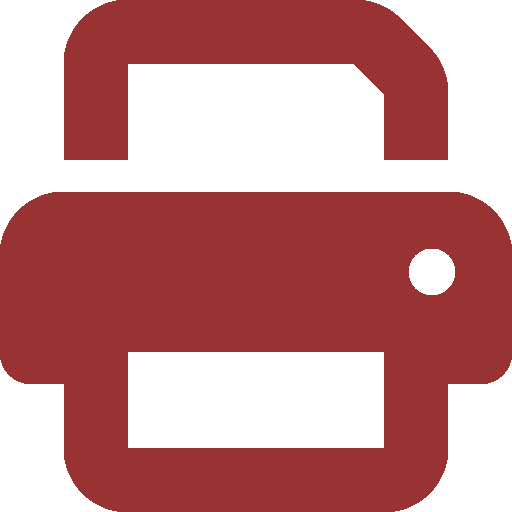Searching for superconductivity
Meet Maria Bambrick-Santoyo, an electrical engineering PhD student and superconductor researcher
Maria Bambrick-Santoyo is a PhD student in Electrical Engineering and Computer Science at MIT, and does physics research in the Mundy Group at Harvard University. Both a dedicated scientist and a mentor to countless young students, Bambrick-Santoyo graduated from Yale last spring, where she served as co-president — and later advisor — of the Yale Society of Women Engineers. Furthermore, she was the sole recipient of the prestigious 2024 Yale Applied Physics Prize.
The Tech sat down with Bambrick-Santoyo to discuss her career trajectory and her goals for the future. This interview has been edited for length and clarity.
The Tech: What are you working on, and how did you become interested in it?
Bambrick-Santoyo: I am looking at making new materials. For everything from the wooden table in your room to your phone, there are differences in the way that the atoms make up those two things — they behave very differently and serve very different functions. Now we have scientific tools to look at the ways that atoms are arranged at the atom-by-atom basis, and make conclusions about what their properties might be. For example, you can think about how closely the atoms are connected or how many electrons they have; that differentiates something from being a piece of wood versus a chip in a computer that can do calculations that you need.
I’m trying to make a superconductor, which is a material that perfectly transmits electricity. A sizable fraction of the power that we generate is lost during transmission — if you were to transmit power without losing any of it, that would help in using less energy.
The superconductors only superconduct at very low temperatures, so the goal is to push that temperature higher. But, as for how we expect to go about it, one leading class of high-temperature superconductors is a copper oxide-based material, so I'm working on an analog of that material. If we can figure out a way to create a nickel oxide material that matches the electron configuration of copper, we might learn some fundamental rules about what makes a superconductor superconduct, or have the possibility of making a better one.
I chose to major in applied physics using the decision-making tactic of like, “What do I like spending time on?” Someone recommended that I try out research when I was an undergrad. It just so happens that the first lab I joined was a materials science lab, adjacent to what I'm doing now, but not the subfield that I ended up in. From that, I learned that I really liked research. But after about a year of working on that project, I was like, “Okay, I wouldn't want to spend another year on this; I’m a little bit bored of it.”
Then I was like, “Maybe I want to do renewable energy.” I did a summer of solar cell research, but I’ve always thought that superconductors sounded interesting. I emailed a professor at Yale and asked, “Can I work with you?” Ultimately, I spent a year and a half on that quantum materials project. By the time the year and a half was up, I was like, “I could spend another year and a half on this, I could start this project all over again.” I didn't hate any project I did. I just progressively enjoyed them more and more.
TT: What advice would you give to your younger self, say, four to five years ago?
Bambrick-Santoyo: Seek out mentors who believe in you. That was probably the single greatest factor that impacted my experience for the better.
Currently, I’m in a very supportive lab environment and very supportive department, but that has not always been the case, and that has posed serious challenges to my ability to want to stay in this field. I read a study that surveyed college women and men in freshman physics courses on how well they think they know the material — at the end of the year, the women who received an A had the same self-perception of their knowledge as the men in the class who had received a C. When I read that, I was like, “Wow, maybe I’m not unqualified — maybe I’m just impacted by the patriarchy?”
My freshman-year Multivariable Calculus professor was great, so I asked her to be my academic advisor. I ended up taking three more of her classes and became her teaching assistant, and then we just started getting lunch once a semester during the last two years of my undergrad. She became a big mentor for me.
Another thing I realized is that your ability to be a good scientist is not determined by how easily science comes to you, but by you taking the time to understand concepts. Anyone can sit down and put in the effort to learn something — even though it might seem easier to others, this doesn't mean that you're not “cut out” to be a scientist.
TT: Looking forward, what are your hopes for your PhD?
Bambrick-Santoyo: Typically, my days are a combination of data analysis and doing experiments. This breaks down into the days that you're making your material, while other days are spent characterizing the material by studying its structure, electronic properties, and surface smoothness.
I'm working on two projects right now: one to wrap up my undergraduate work, and one that’s my current PhD project.
For my PhD project, I’m using X-ray diffraction to characterize the structure of my films. The wavelength of X-rays is about the same length as the spacing between atoms in the material. Just like how light is used to see through an optical microscope, here, you’re using X-rays to see, and it can tell you what type of material you made and how good it is.
As for the project wrapping up my undergraduate work, I’m working with 3D intensity maps. These maps are visualized as a cube where the x-axis and y-axis represent momentum, and the z-axis represents energy, with each point assigned an intensity. Depending on what direction you slice through the cube, you can extract information about the material’s “electronic DNA,” kind of like the rulebook that determines its properties.
Sometimes, discoveries just kind of pop out of the woodworks. There are some materials that, on their own, don't superconduct, but when you put them on top of each other, the interface between them does. Stacking or layering different materials can create an electronic structure that better reduces the dissipation of current. Applying pressure, strain, or changing chemical composition — using various “tuning knobs” to change the chemistry of the material — can help probe the underlying physics.
As a field, I think there’s still so much to be explored. I’m working on learning how to make a material that hasn't been made very well before. It’s hard to predict where my research will go. Sometimes you start a project with one intention, and then it turns out that it’s exciting for a totally different reason, so you pivot, and that's kind of the nature of science.





